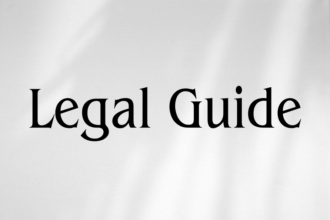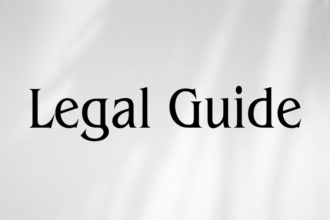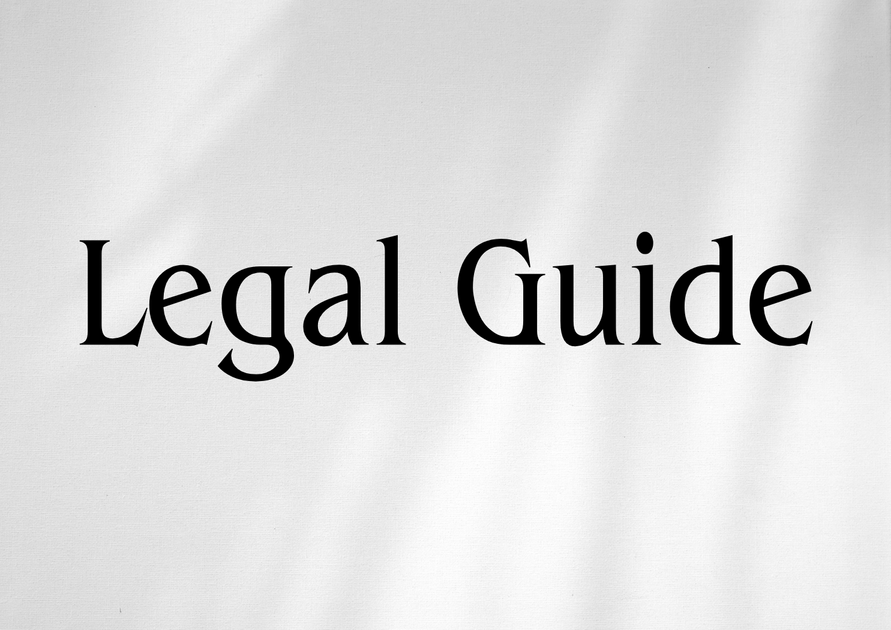Introduction to DIFC Employment Law
As the United Arab Emirates (UAE) continues to fortify its role as a global business hub, understanding the legal architecture of employment in specialized jurisdictions such as the Dubai International Financial Centre (DIFC) is paramount for businesses operating locally and internationally. The DIFC Employment Law, under the primary statute DIFC Law No. 2 of 2019 and its subsequent amendments, establishes a bespoke framework that governs employer and employee relations within the Centre. Recent years have witnessed significant legal updates—most notably with DIFC Employment Law Amendment Law No. 4 of 2020 and Law No. 3 of 2021—intensifying the imperative for organizations to remain informed and compliant in this nuanced regulatory landscape.
The specificity of DIFC Employment Law, distinct from UAE Federal Law No. 33 of 2021 (Governing Employment Relations), is pivotal for employers seeking to safeguard their interests, attract international talent, and operate seamlessly in the region. Critically, non-compliance exposes businesses to substantive legal, financial, and reputational risks.
This article delivers a comprehensive, consultancy-grade analysis of DIFC Employment Law from the perspective of employer obligations and employee rights, framed within the context of 2025 legal updates and proactive compliance strategies.
Table of Contents
- Overview of DIFC Employment Law and Regulatory Structure
- Key Employer Obligations Under DIFC Employment Law
- Employee Rights in the DIFC
- Comparison: DIFC Employment Law and UAE Federal Labour Law
- Case Studies and Hypotheticals
- Risks and Consequences of Non-Compliance
- Practical Compliance Strategies for DIFC Employers
- Conclusion and Best Practices for 2025 and Beyond
Overview of DIFC Employment Law and Regulatory Structure
The Legal Framework: DIFC Law No. 2 of 2019 and Subsequent Amendments
The DIFC operates as a jurisdiction with independent, English-language common law statutes, maintaining legal autonomy from UAE Federal Labour Law. The DIFC Employment Law, first introduced via Law No. 4 of 2005 and comprehensively updated through Law No. 2 of 2019, establishes clear rights and obligations for both employers and employees. Key amendments in 2020 (Law No. 4 of 2020) and 2021 (Law No. 3 of 2021) have modernized provisions, reflecting international best practices and addressing evolving business realities, including the COVID-19 pandemic and remote work.
Regulatory oversight and dispute resolution are administered via the DIFC Authority and the DIFC Courts, offering a unique dispute resolution mechanism that combines efficiency, transparency, and neutrality attractive to multinational employers.
Primary official sources:
- DIFC Employment Law (DIFC Law No. 2 of 2019, as amended)
- DIFC Courts and Dispute Resolution Authority Practice Directions
- UAE Ministry of Human Resources and Emiratisation guidance notes
Key Employer Obligations Under DIFC Employment Law
Employment Contracts: Formalities and Requirements
The backbone of any employment relationship within the DIFC lies in the employment contract. Article 10 of DIFC Law No. 2 of 2019 mandates employers to provide a written contract at the beginning of employment, clearly articulating the scope of work, compensation, benefits, working hours, leave entitlements, notice periods, and grounds for termination.
Best Practice: Contracts should be robust, tailored to the specific role, and consistent with the Minimum Terms set out in Schedule 1 of the Law—avoiding ambiguities that could expose the employer to disputes.
Wage and Benefits Obligations
Under Articles 18 and 19, employers must guarantee timely payment of wages, with non-payment or delayed payment incurring statutory penalties. The law prescribes a statutory minimum for end-of-service benefits—replacing traditional gratuity with Qualifying Schemes under the DIFC Employee Workplace Savings Plan (DEWS), effective for employees after February 2020. Employers are mandated to contribute at least 5.83% (first five years) and 8.33% (afterward) of the employee’s basic salary monthly into approved schemes.
Non-compliance triggers exposure to fines and compensatory claims before the DIFC Courts.
Working Hours, Overtime, and Rest Periods
Under Article 22, the standard workweek must not exceed 48 hours unless otherwise agreed in writing. Overtime is permitted but must be compensated at no less than 125% (or 150% for work during official rest days) of the employee’s usual wage. Mandatory rest periods include 11 consecutive hours in every 24-hour period and 24 hours of uninterrupted rest every week.
Leave: Annual, Sick, Maternity, and Special Leave
Employers must provide:
- Minimum 20 working days of paid annual leave
- 60 working days of paid sick leave, with a staged reduction in pay
- At least 65 working days of maternity leave (with at least 33 days fully paid)
- Paternity and compassionate leave as stipulated
Employers are strictly prohibited from terminating employment on the basis of leave utilization, with violations subject to legal claims for unfair dismissal or discrimination.
Anti-Discrimination and Equal Treatment
DIFC Law No. 4 of 2020 has amplified protections against workplace discrimination, making it unlawful to discriminate—directly or indirectly—on the grounds of sex, marital status, race, nationality, age, pregnancy, or disability. Employers face substantial liability for breaching these obligations, with the DIFC Courts empowered to order compensation, reinstatement, or other remedies.
Termination and End-of-Service Settlements
Article 58 stipulates clear grounds and procedures for termination. Both redundancy and dismissal for cause must be documented and justified. Settlement of all contractual and statutory entitlements must occur promptly at the end of service, including unpaid wages, accrued leave, notice pay, and DEWS contributions. Failure to comply results in mandatory financial penalties—5% of the employee’s monthly wage for every five days of delay.
Data Protection and Confidentiality
Under DIFC Data Protection Law No. 5 of 2020, employers are obligated to protect employees’ personal data, implementing adequate policies and safeguards. Unauthorized use or disclosure exposes employers to administrative fines and compensation orders.
Employee Rights in the DIFC
Right to Fair Remuneration and Benefits
Employees are entitled to wages as set in the contract, in accordance with statutory minimums. Additional rights cover participation in the DEWS scheme (or approved alternative) and receipt of all leave and benefits prescribed under the law.
Protection Against Unlawful Termination
Wrongful or arbitrary termination—particularly on grounds of exercising statutory rights or protected characteristics—is strictly prohibited. Article 63 empowers employees to seek reinstatement or equitable compensation.
Equal Treatment and Workplace Safety
Employees have categorical protection against discrimination and are entitled to a safe and non-threatening work environment under Article 36. Employers must conduct risk assessments and maintain clear policies for addressing workplace hazards.
Access to Grievance Mechanisms and DIFC Courts
The sophisticated dispute resolution mechanisms of the DIFC Courts enable employees to lodge claims efficiently, without fear of retaliation. The Law prohibits any detrimental treatment related to lawful grievances under Article 67.
Comparison: DIFC Employment Law and UAE Federal Labour Law
Key Comparison Table of Employer Obligations and Employee Rights
| Category | DIFC Employment Law (Current) | UAE Federal Labour Law No. 33/2021 | Old UAE Labour Law (Pre-2022) |
|---|---|---|---|
| Minimum Annual Leave | 20 working days | 30 calendar days | 30 calendar days |
| DEWS End-of-Service Benefit | Mandatory monthly employer contribution (5.83%-8.33%) | Lump sum gratuity on separation | Lump sum gratuity on separation |
| Working Hours | 48 hours/week (may be reduced by contract) | 48 hours/week (with Ramadan exception) | 48 hours/week |
| Probation Period | Up to 6 months | Up to 6 months | Up to 6 months |
| Notice Period (min/max) | 7 days to 3 months | 14 days to 3 months | 30 days |
| Discrimination Protections | Comprehensive (race, gender, disability, age, etc.) | Broad, with additional updates under Federal Decree | Limited |
| Termination | Requires cause or redundancy, written reasons | With or without cause (subject to compensation) | Varied/less detailed grounds |
| Dispute Resolution | DIFC Courts, specialist tribunals | Federal courts/Ministry mediation | Federal courts/Ministry mediation |
Visual Suggestion: Consider incorporating a side-by-side process flow diagram of the DIFC grievance and dispute resolution workflow versus the federal mechanism for added clarity.
Case Studies and Hypotheticals
Case Study 1: Delayed DEWS Contributions and Employer Liability
Scenario: A DIFC-based financial services employer delays monthly DEWS pension contributions for several employees due to an internal system error, spanning several months.
Analysis: Under Articles 19 and the DIFC Board of Directors’ DEWS Scheme Rules, delayed contributions expose the employer to:
- Mandatory compensatory payments to employees for any loss or missed investment opportunity
- Regulatory fines imposed by the DIFC Authority
- Potential civil actions for breach of statutory duty
Consultancy Insight: Employers should implement automated payroll controls and quarterly compliance audits to preempt such risks.
Case Study 2: Unlawful Termination Following Sick Leave
Scenario: An employee avails the maximum permitted paid sick leave but is terminated without clear performance-based justification.
Analysis: Article 36(g) renders such termination unlawful within the DIFC. The employee would be entitled to damages, reinstatement, and potentially additional compensation for distress/discrimination.
Risk Mitigation: Employers must maintain meticulous records and seek legal counsel before proceeding with sensitive terminations.
Case Study 3: Workplace Discrimination Allegation
Scenario: A female employee alleges discriminatory treatment following her pregnancy announcement, including exclusion from key meetings and substandard performance review.
Legal Outcome: Under Article 58, DIFC Law imposes direct liability on the employer. The Courts retain discretion to order injunctive relief, compensation, or policy reviews.
Strategic Recommendation: Immediate internal investigation, policy review, and anti-discrimination training are critical steps to minimize exposure.
Risks and Consequences of Non-Compliance
Penalties, Fines, and Remedial Measures
Non-compliance with DIFC Employment Law triggers a spectrum of consequences, ranging from administrative fines and court-ordered compensation to reputational damage affecting an employer’s ability to secure regulatory approvals, visas, or banking relationships.
| Type of Breach | Potential Penalty | Remedial Requirement |
|---|---|---|
| Late salary or benefit payment | 5% of monthly wage per five-day delay | Immediate settlement and compensation |
| Anti-discrimination breach | Unlimited compensatory damages | Remedial training, policy overhaul |
| Breach of contract terms | Compensatory and punitive damages | Enforcement of specific performance |
| Unlawful termination | Reinstatement, salary back-payment | Process review, HR retraining |
| Failure to enroll in DEWS | Regulatory fines, compensatory damages | Back-pay into scheme, interest |
Visual Suggestion: A penalty timeline or compliance heat map to illustrate the severity and types of penalties across different categories for maximum impact.
Risk to Business Operations and Reputation
Non-compliance undermines investor trust, impacts brand reputation, complicates talent acquisition, and can lead to operational interruptions due to regulatory interventions or litigation. The DIFC Authority actively monitors and publicly records enforcement actions, magnifying reputational consequences.
Practical Compliance Strategies for DIFC Employers
1. Comprehensive Contract Review
Conduct an annual legal audit of all employment contracts to ensure terms reflect the latest statutory requirements and best practices, minimizing ambiguity and pre-empting disputes.
2. Internal Policy Alignment and Training
Develop robust human resources policies that mirror DIFC-specific requirements, especially regarding DEWS, anti-discrimination, leave management, and workplace safety. Provide periodic, mandatory training for HR and management teams.
3. Regular DEWS and Payroll System Compliance Checks
Integrate periodic system reviews, preferably quarterly, and coordinate with DEWS scheme providers to validate timely employer contributions and accurate payroll reporting.
4. Leveraging Legal Technology and DIFC Authority Resources
Utilize digital compliance tools for document management, automated policy updates, and tracking regulatory changes. Maintain regular consultation with DIFC Authority’s published Practice Directions, Government circulars, and Ministry of Human Resources and Emiratisation advisories.
5. Transparent Grievance and Disciplinary Procedures
Ensure clear, confidential, and accessible channels for addressing employee concerns. Document all disciplinary investigations and corrective actions in alignment with Article 67’s guidelines, minimizing exposure from procedural errors.
6. Legal Consultation and Pre-litigation Risk Assessments
Engage specialist legal counsel early when contemplating sensitive employment actions—such as large-scale redundancies, disciplinary dismissals, or contractual amendments—to ensure full compliance and mitigate risks of challenge.
Suggested Visual: A compliance checklist infographic summarizing core steps DIFC employers should undertake annually.
Conclusion and Best Practices for 2025 and Beyond
DIFC Employment Law stands as a paradigm of modern, business-friendly regulation in the UAE, balancing robust protections for employees with a high level of operational certainty and flexibility for employers. As regulatory scrutiny intensifies and the legal environment evolves, proactive compliance remains the cornerstone of operational resilience and reputational excellence for DIFC-based employers.
Key Takeaways:
- DIFC Employment Law is distinct, sophisticated, and evolving: constant monitoring of updates is non-negotiable.
- Employer obligations—in relation to contracts, wages, DEWS, leave, and anti-discrimination—are comprehensive and enforced with rigor.
- Developing, disseminating, and regularly updating internal policy aligned to DIFC Law is essential for legal risk management.
- Investment in robust grievance mechanisms, compliance technology, and expert legal advice reduces exposure to costly litigation and reputational harm.
Looking ahead, DIFC-based employers should anticipate further legislative refinements responding to global workplace trends, ESG (environmental, social, governance) mandates, and digitalization of HR practices. Embedding an enterprise-wide culture of legal compliance and proactive governance will position your organization for sustained success in the dynamic DIFC ecosystem.




